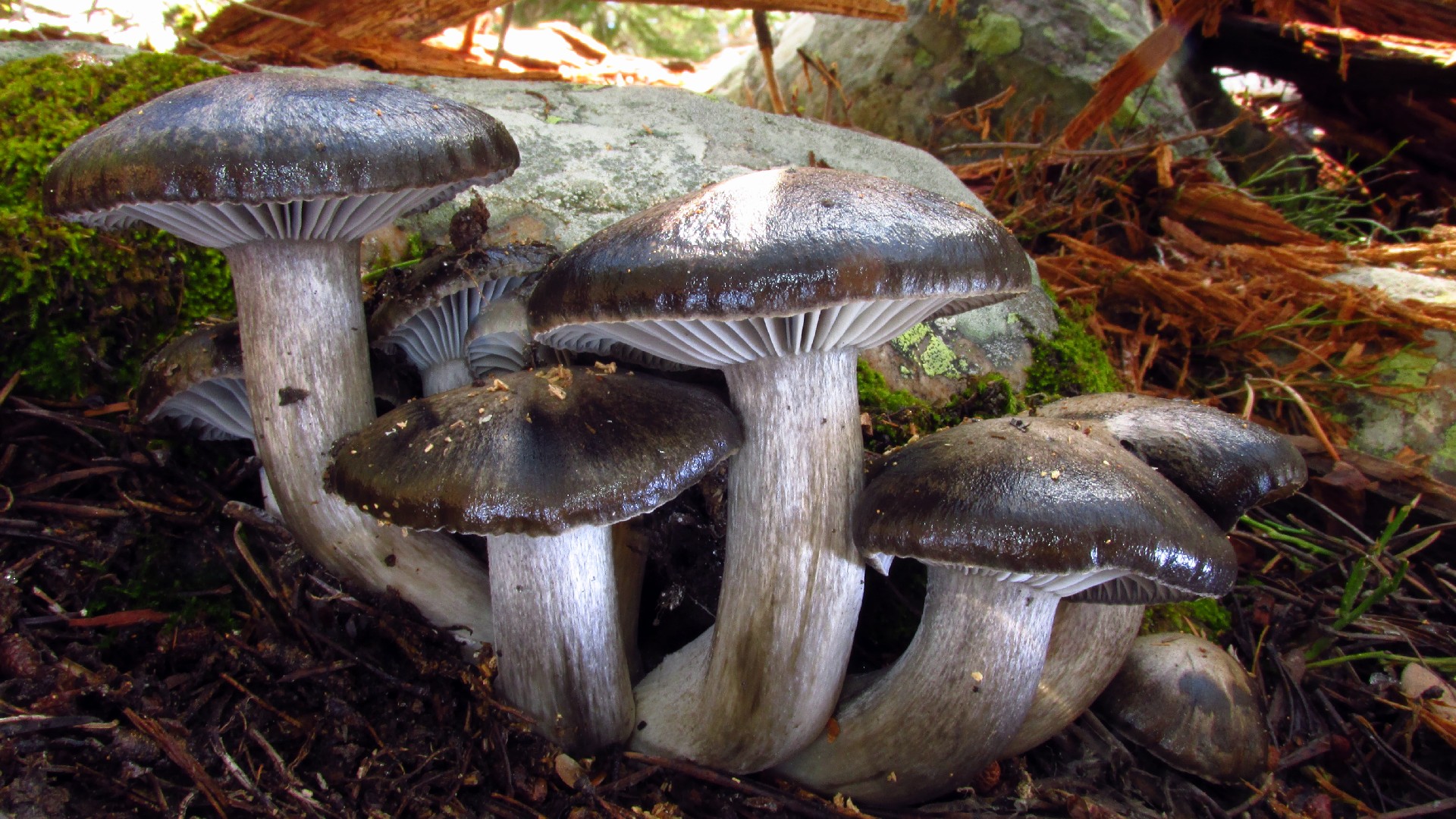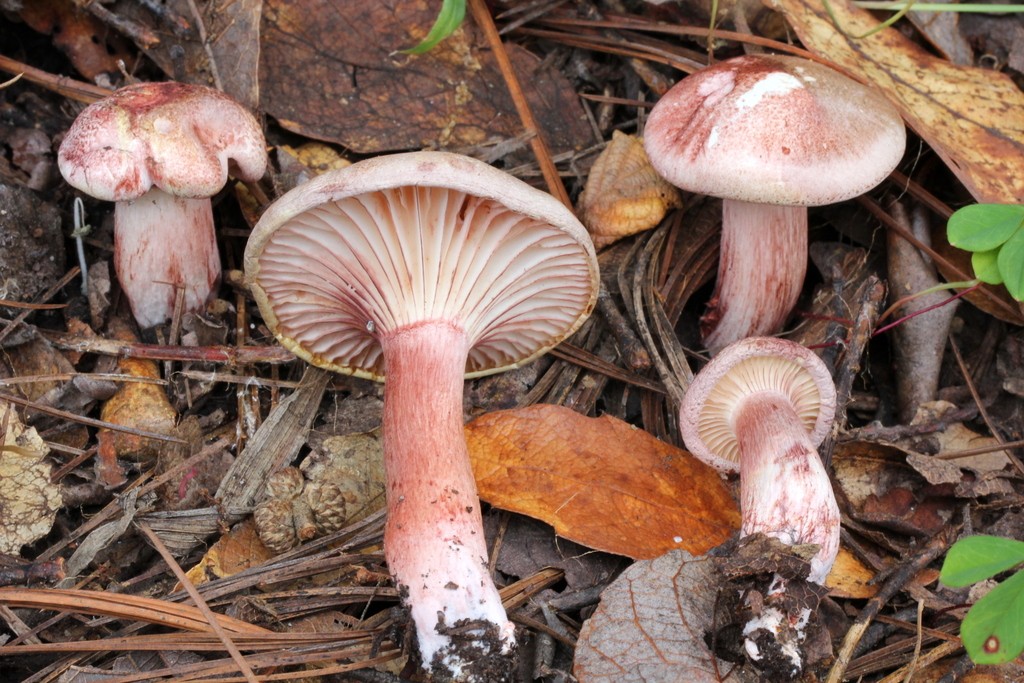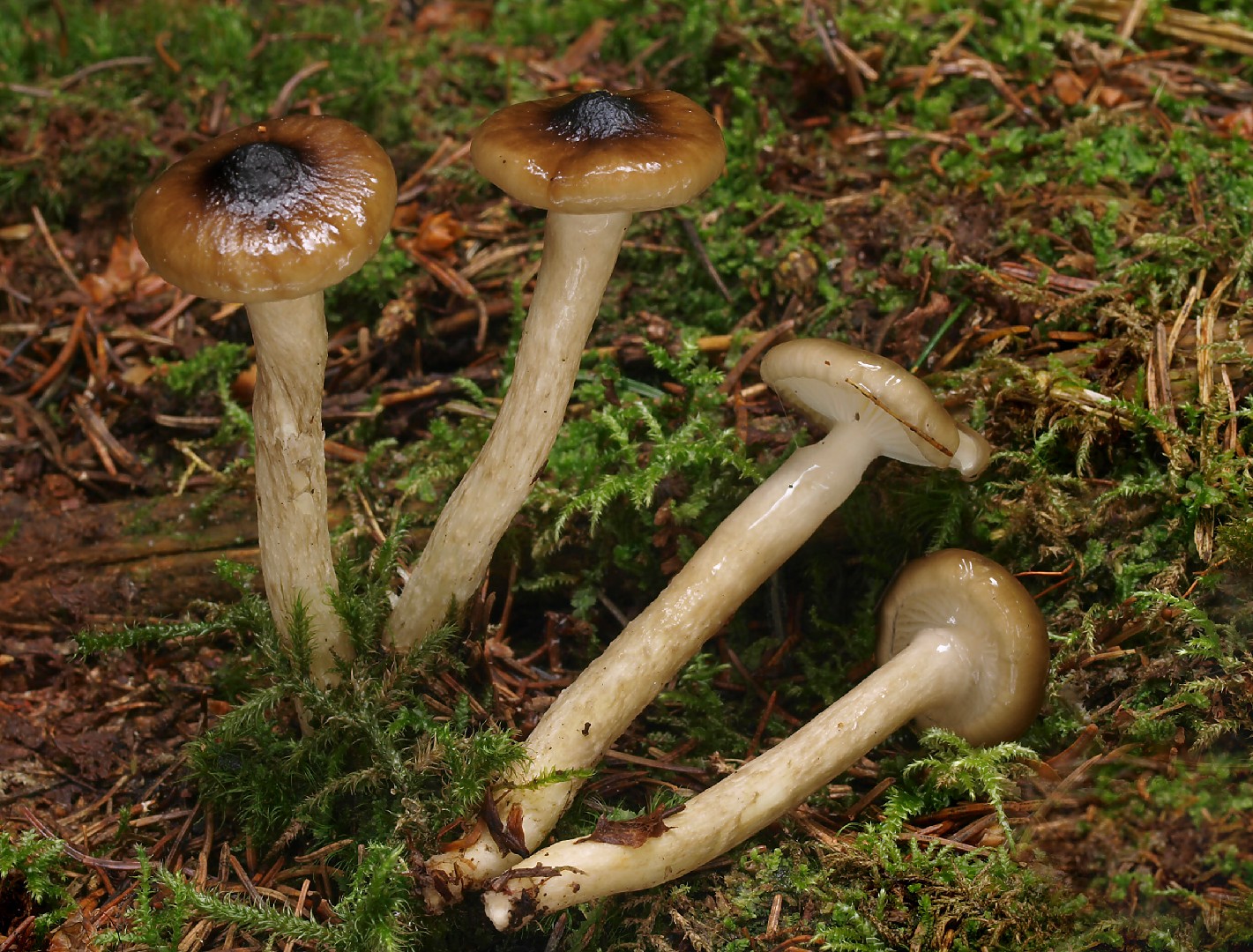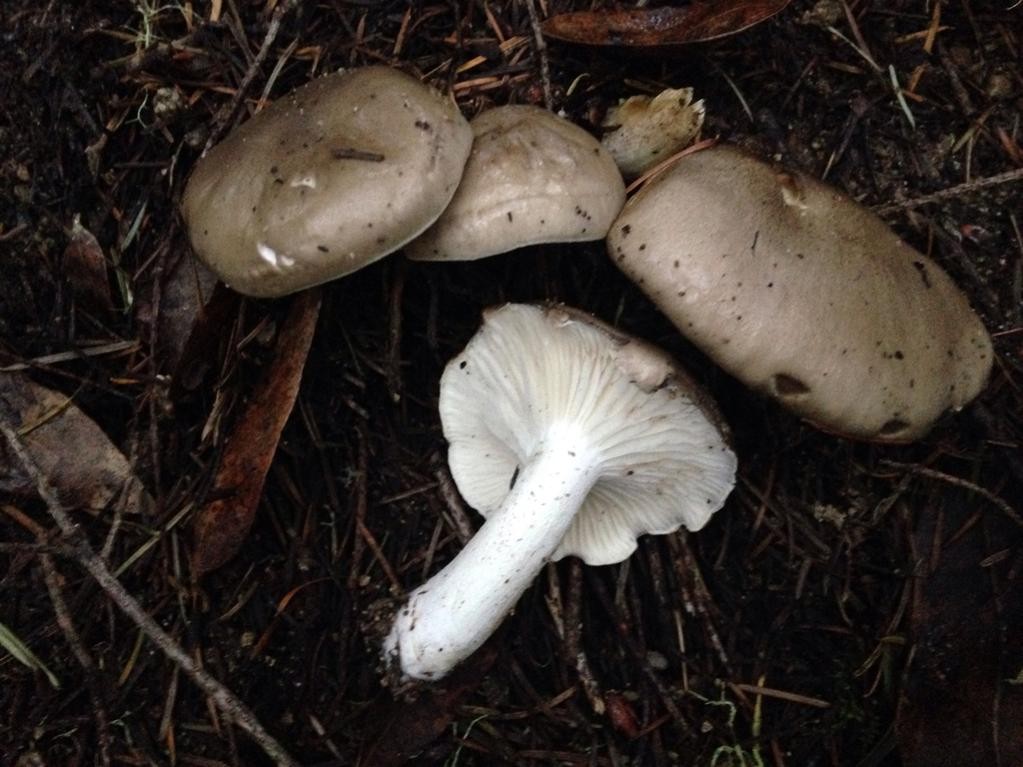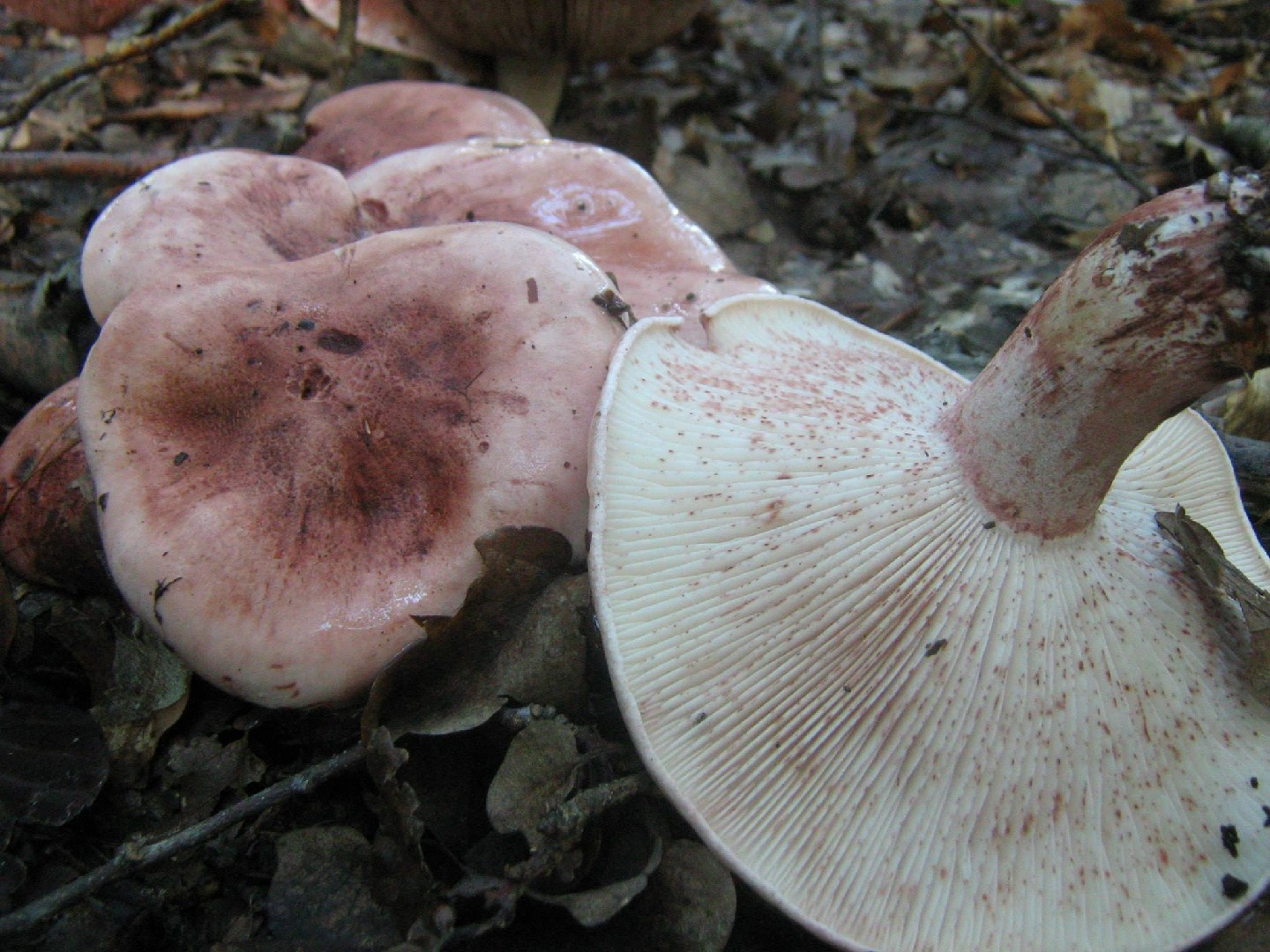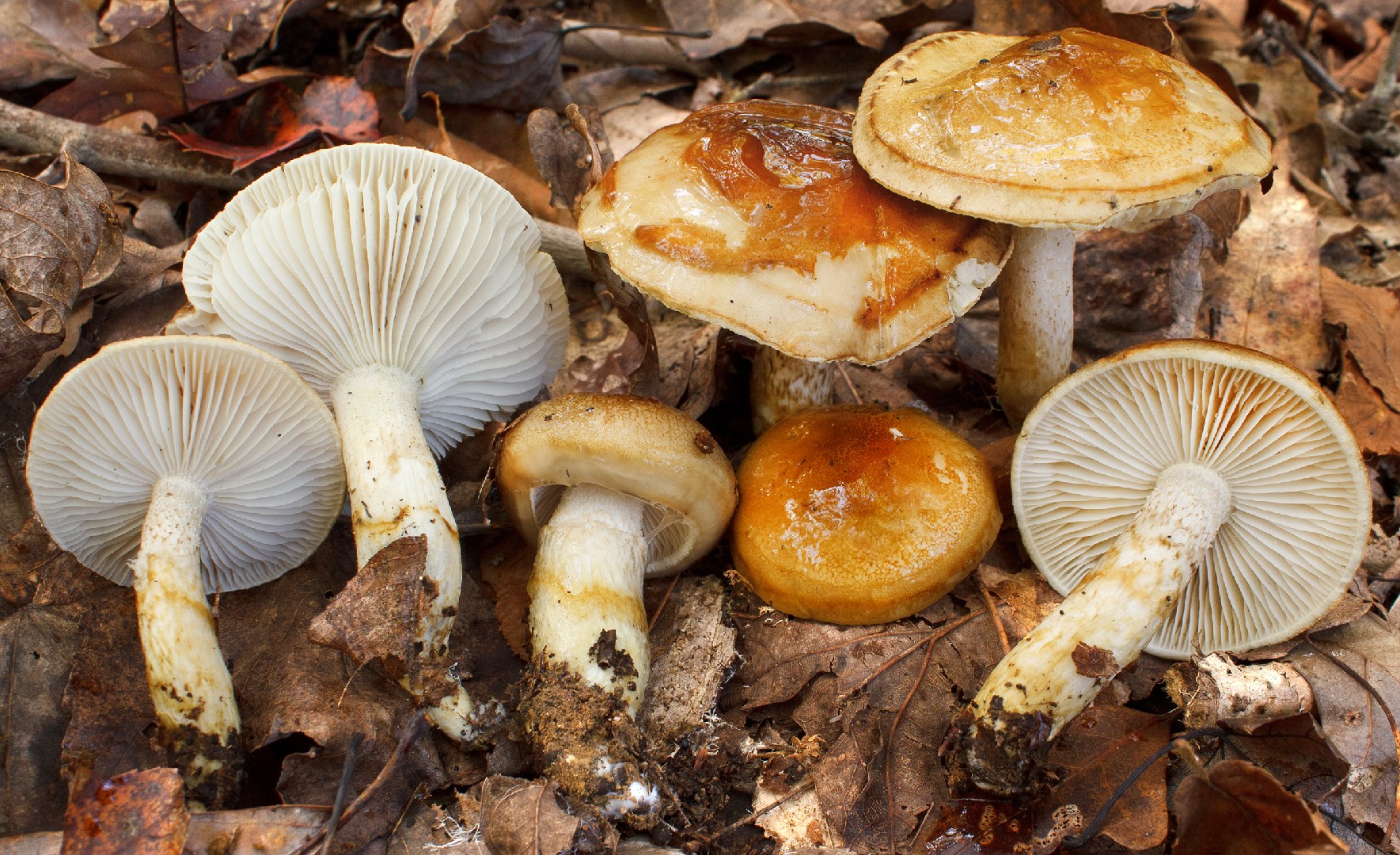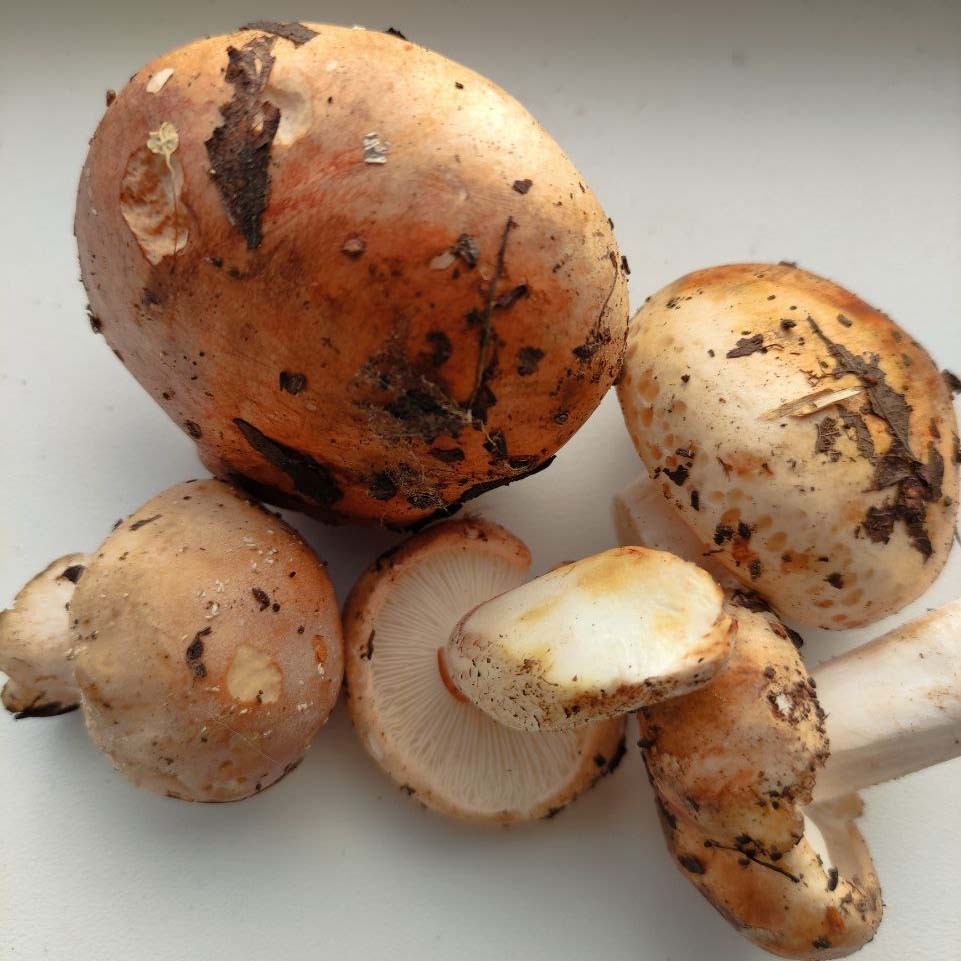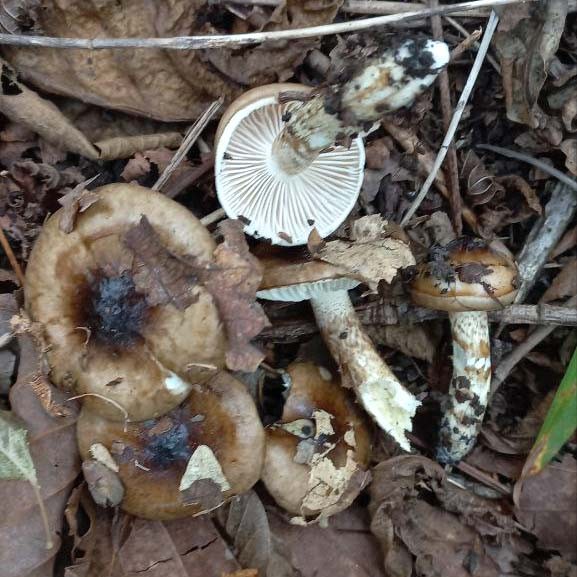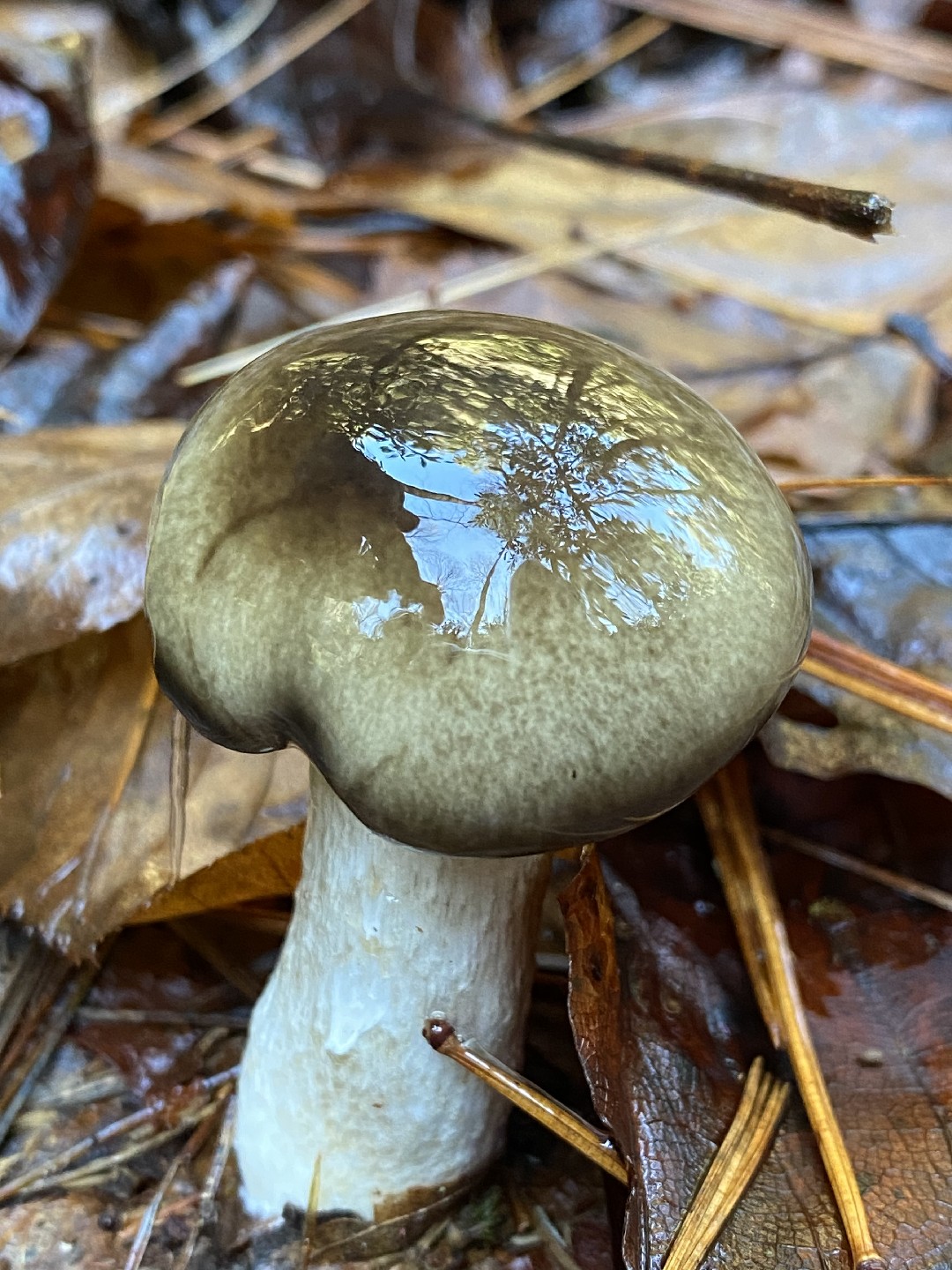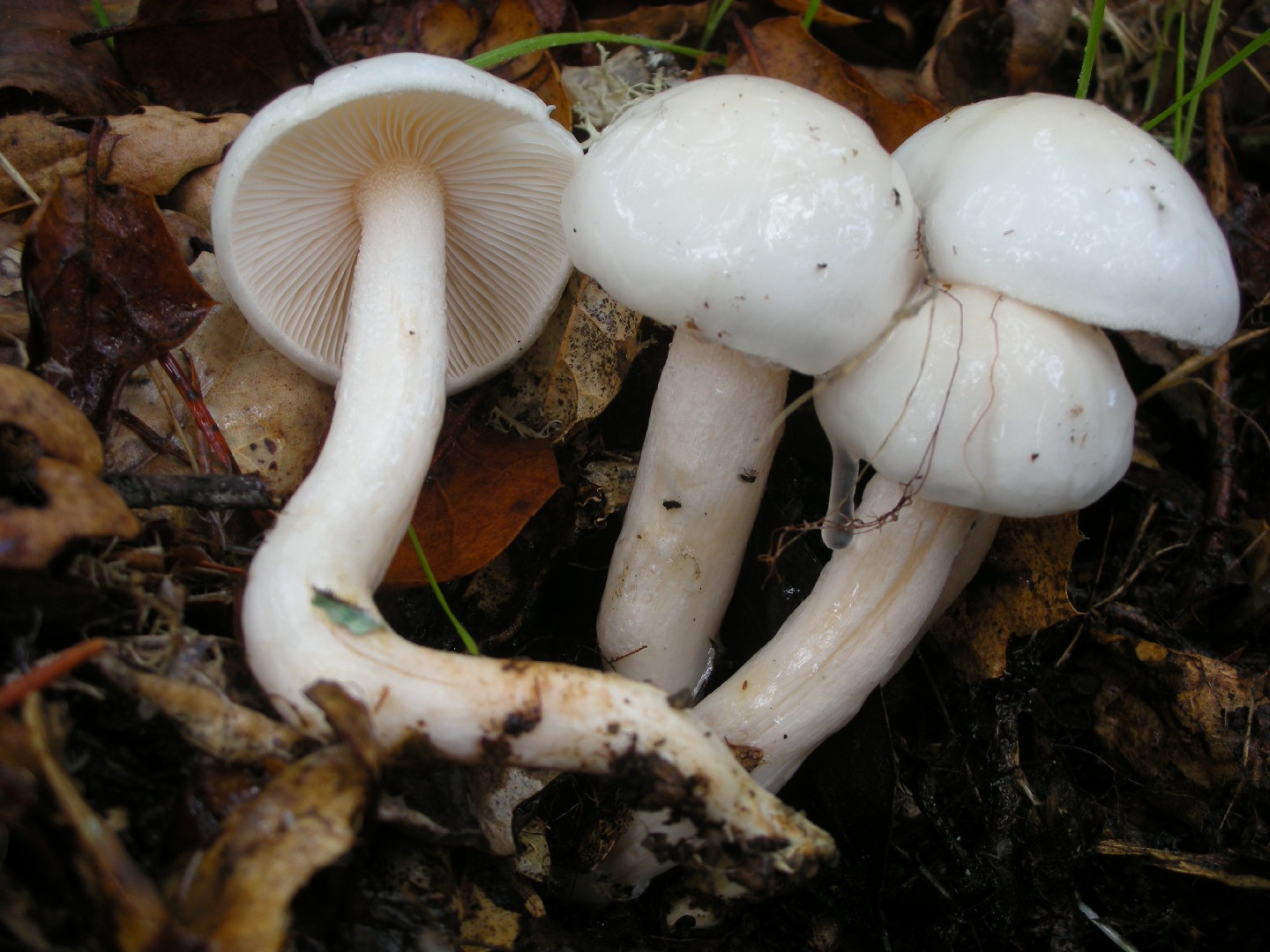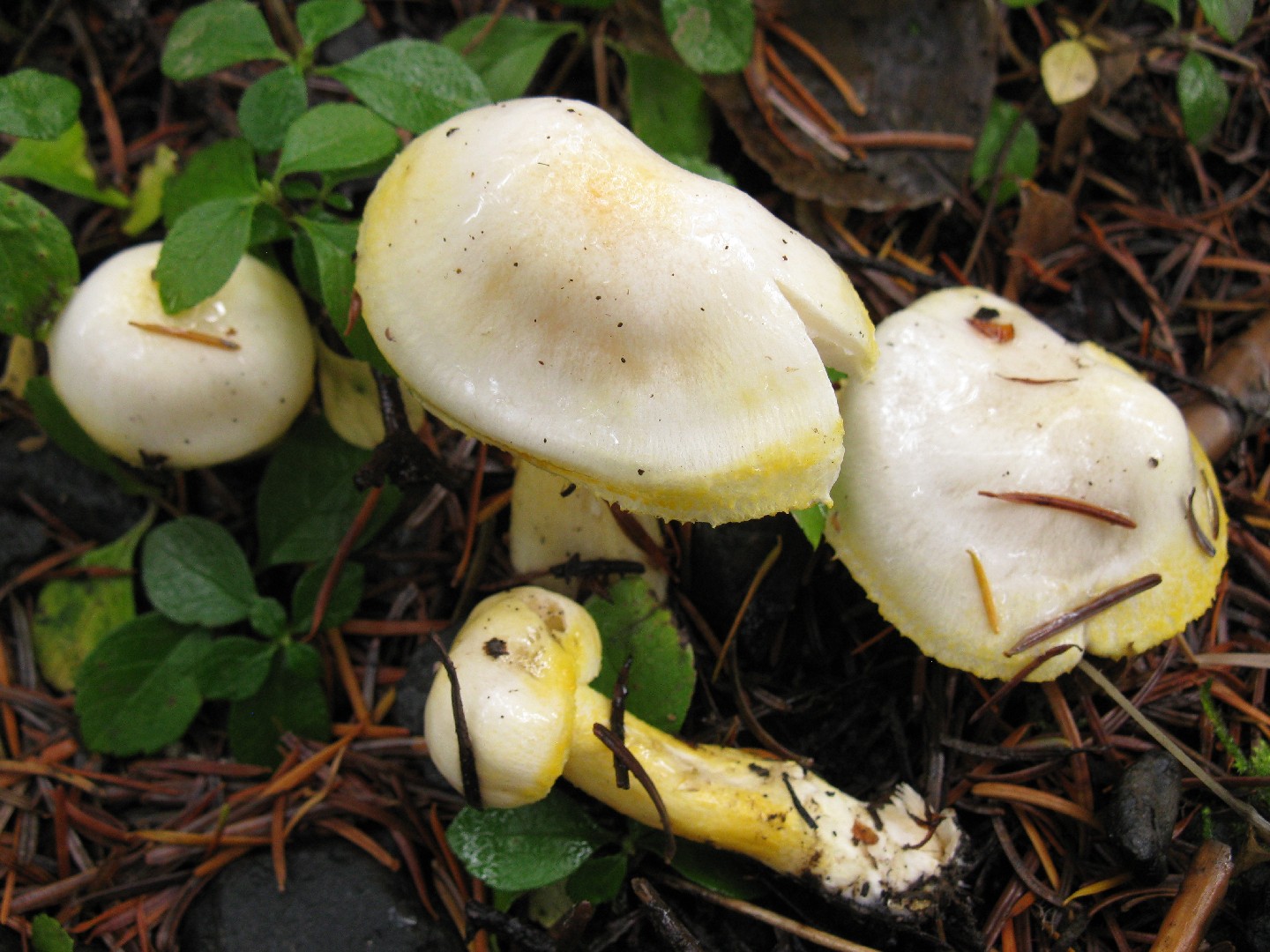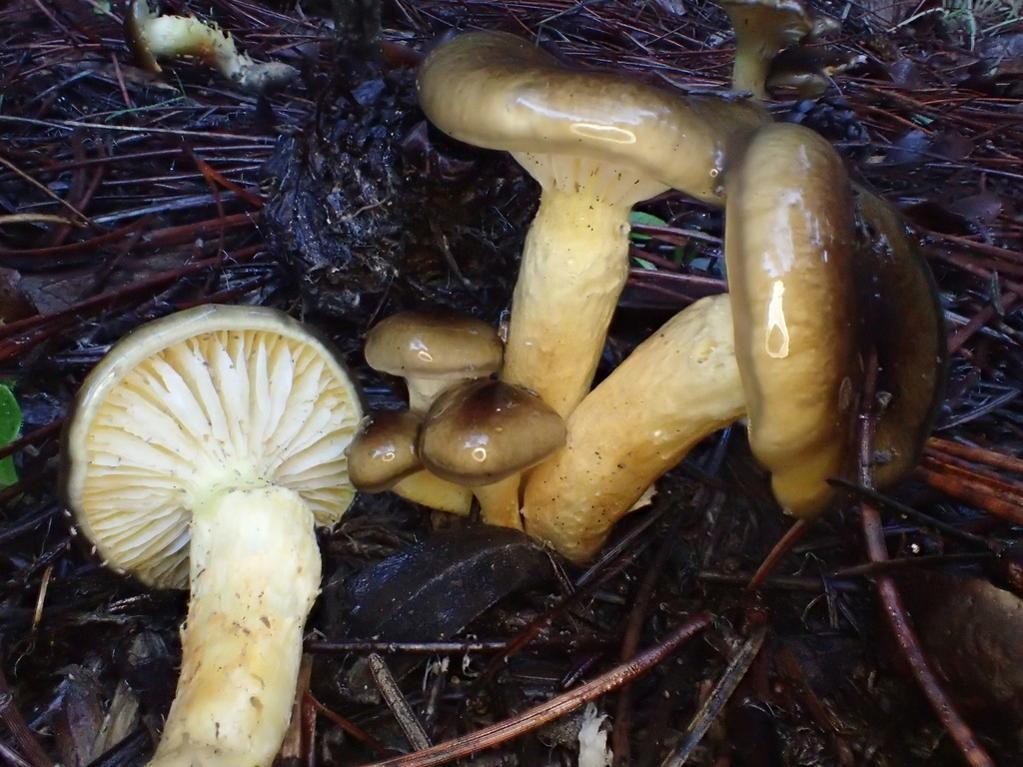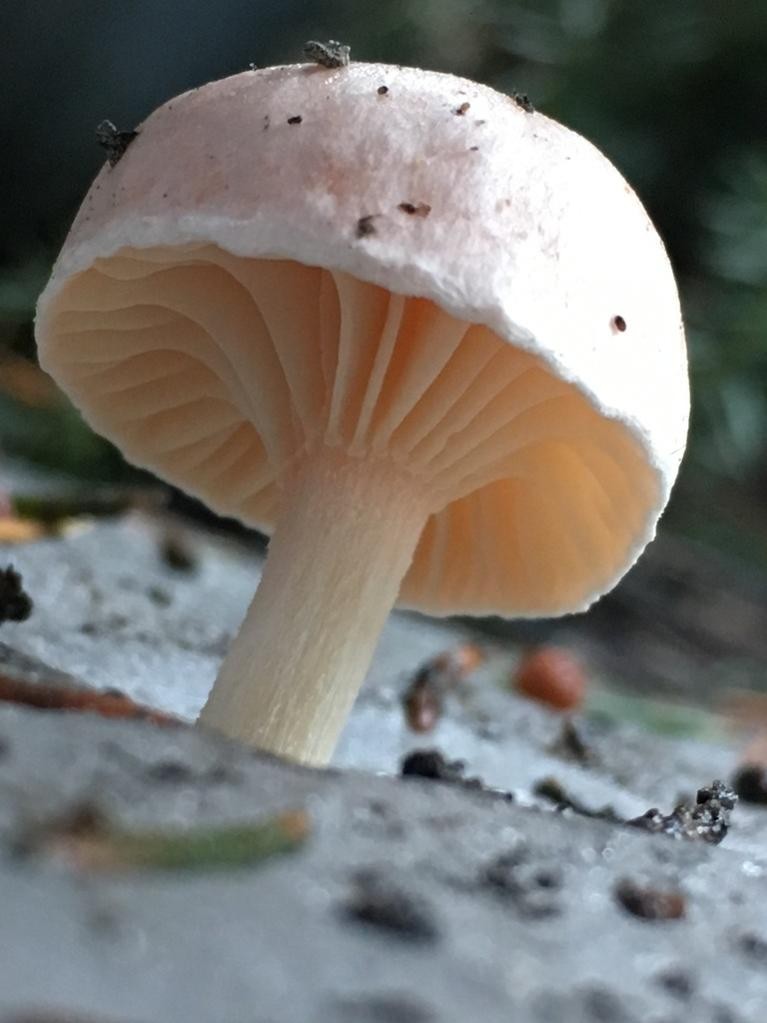Woodwaxes
Scientific name: Hygrophorus
Woodwaxes
Scientific name: Hygrophorus
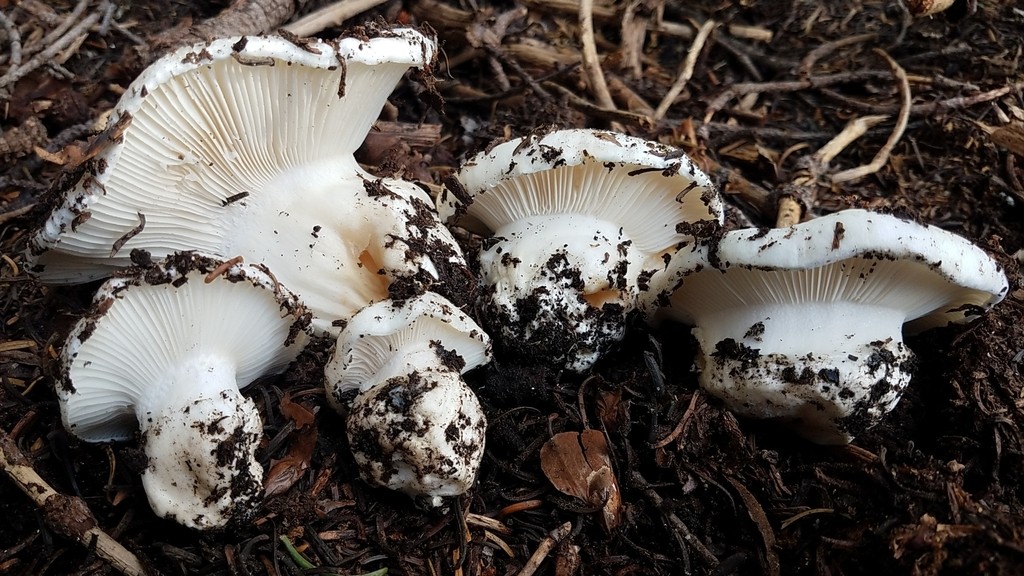 Photo By alan_rockefeller , used under CC-BY-4.0 /Cropped and compressed from original
Photo By alan_rockefeller , used under CC-BY-4.0 /Cropped and compressed from original Description
Woodwaxes are known for their waxy caps, which can appear slimy or sticky, especially when wet. They are often found in forested areas, growing in close association with tree roots. Many species in this group exhibit bright and varied colors, ranging from white to vibrant yellows, oranges, and reds. The gills beneath the cap tend to be thick and widely spaced, making them distinctive and easy to identify.
